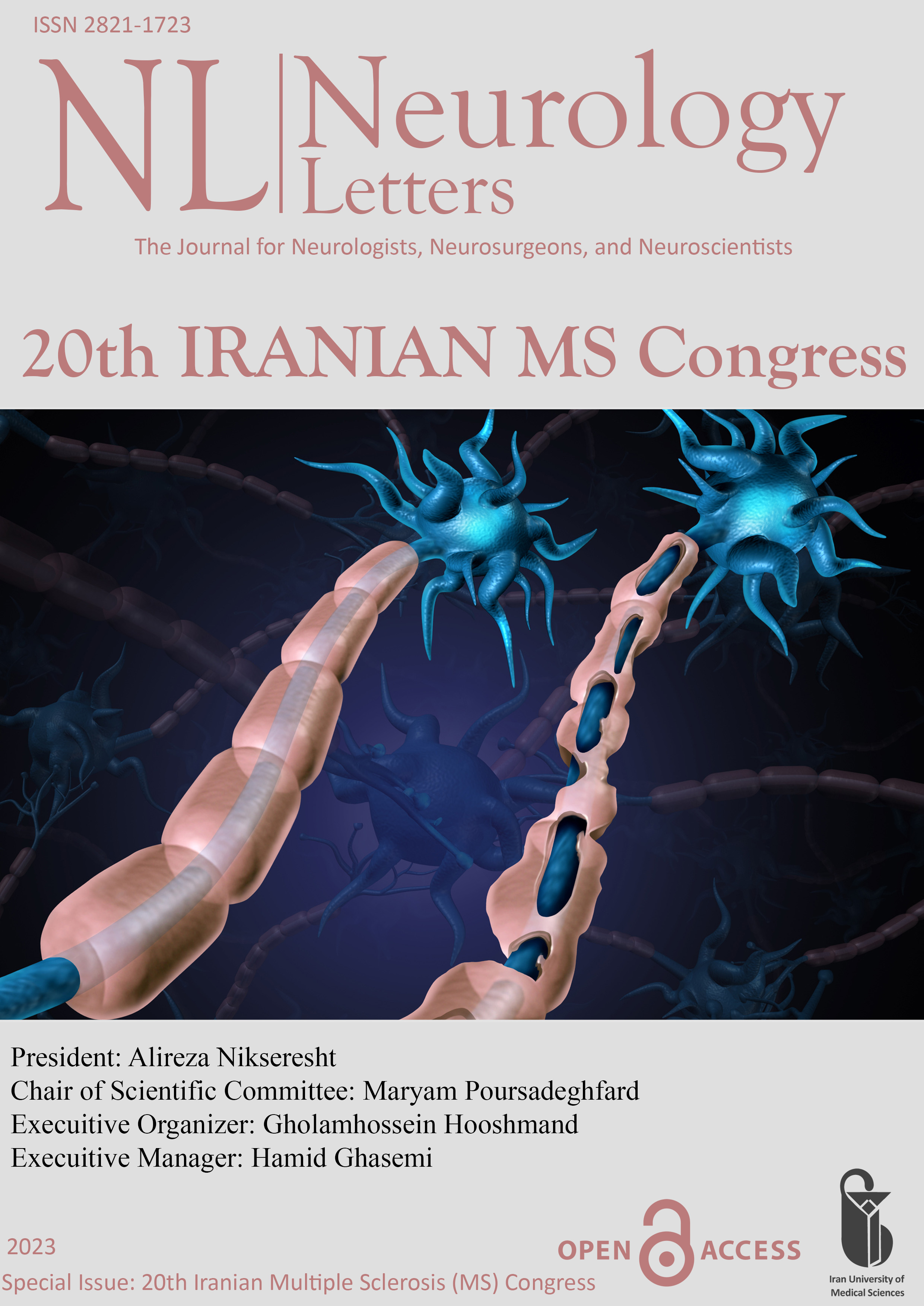Sleep Disturbances and Disease Characteristics of Patients with Multiple Sclerosis in Iran: A Cross-sectional Study (ORP-32)
Document Type : Oral Presentation
Authors
- Mohammad Yazdan Panah 1
- Yousef Mokary 2
- Arshia Ghalamkari 3
- Ahmad Pourmohammadi 4
- Saba Naghavi 5
- Iman Adibi 5
- Fereshteh Ashtari 5
1 Students Research Committee, Shahrekord University of Medical Sciences, Shahrekord, Iran
2 Isfahan Neurosciences Research Center, Isfahan University of Medical Sciences, Isfahan, Iran
3 Student Research Committee, Isfahan University of Medical Sciences, Isfahan, Iran
4 School of Cognitive Sciences, Institute for Research in Fundamental Sciences (IPM), Tehran, Iran
5 1. Isfahan Neurosciences Research Center, Isfahan University of Medical Sciences, Isfahan, Iran 2. Department of Neurology, School of Medicine, Isfahan University of Medical Sciences, Isfahan
Abstract
Background: Sleep disorders are more prevalent in people with multiple sclerosis (pwMS) than in the general population. This study aimed to examine the clinical and sociodemographic factors contributing to sleep disorders in pwMS.
Method: The participants in this cross-sectional study were pwMS from the Isfahan Province in Iran. Sleep disorders were assessed using the Insomnia Severity Index (ISI), International Restless Legs Syndrome Study Group (IRLSSG), Berlin, and STOP-Bang questionnaires. A logistic regression model was applied to determine the accuracy of independent factors in predicting sleep impairment. A multivariate logistic regression analysis was conducted to examine the impact of multiple sclerosis (MS) types on sleep disorder severity predictability by independent variables.
Result: A total of 796 pwMS were included in the current study, 693 with relapsing-remitting MS and 103 with secondary-progressive MS. Rest leg syndrome (RLS) and insomnia disorders were not present in 48.1% and 50.5% of the pwMS, respectively. According to STOP-Bang and Berlin, 87.3% and 88.4% of patients had a low-severity risk for obstructive sleep apnea (OSA), respectively. The logistic regression showed that age, gender, and Expanded Disability Status Scale (EDSS) were associated with the risk of OSA (p < 0.05). RLS severity was also correlated with age and EDSS (p < 0.05). The association between sleep disorder severity and independent variables was not affected by MS type in multivariate logistic regression.
Conclusion: In this study, we found that sleep disorders such as RLS, insomnia, and OSA are common among pwMS in Iran. Sociodemographic factors, as well as disease characteristics, can have an impact on sleep disorders among pwMS.
Keywords
 Neurology Letters
Neurology Letters
